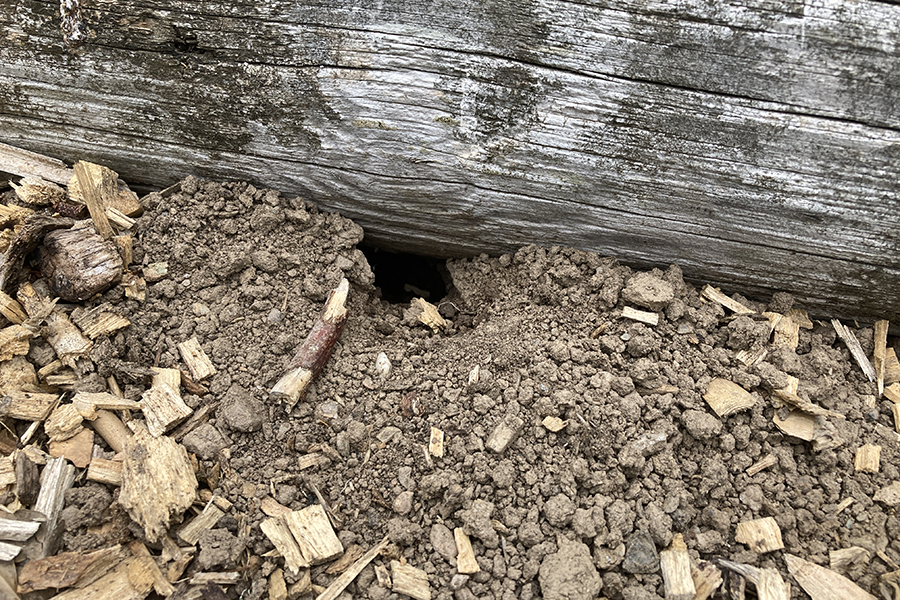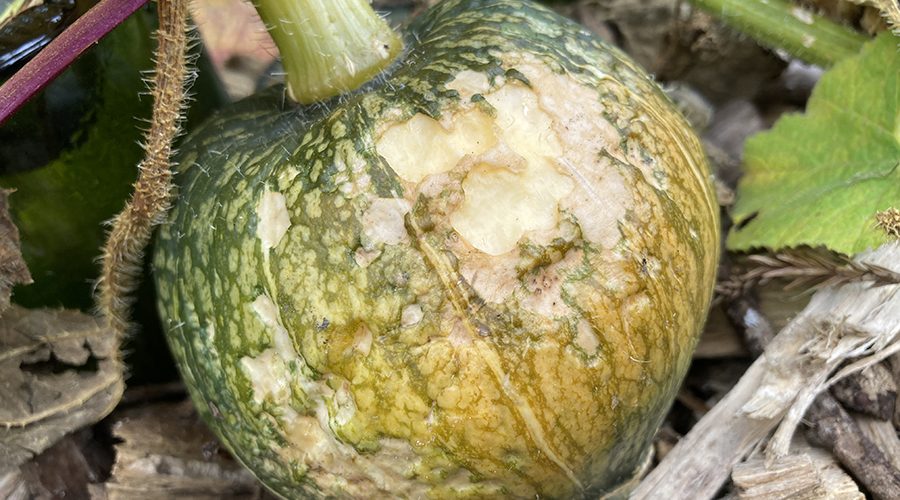Check over your developing winter squashes and pumpkins this weekend – you may find some teeth marks and nibbles in the skin, as pictured above. If so, there’s a good chance you’ve got mice or voles around.
There are other tell-tale signs too that you can look out for:
- Beetroots half eaten when you pull them up
- Soft ridges of soil at the surface of raised beds, formed by voles tunnelling
- Holes in the earth – larger ones will be rats, smaller ones will be mice/voles.

It can be disappointing to find little nibble marks in your small squashes as they are developing, and difficult to deter the mice/voles too. Your squashes will tolerate a little damage, and we find that they seem to pick a particular squash and chew on that leaving other squashes untouched, virtually, so it’s not a bad idea to leave them to it and not interfere.
The best way to keep numbers down is to minimise attractive shelters and available food. Many gardeners swear by spraying plants with peppermint oil – you could certainly give it a try, but we haven’t had a huge amount of success with it and find that trying to get the plot less rodent-friendly as below is a better long term approach if you don’t wish to use traps etc.
- Turn compost piles regularly. Rodents don’t like their homes being disturbed so this will help to discourage them from settling in.
- Make sure anything that is even remotely edible in the shed is kept in a metal bucket or similar. That includes harvested pumpkins and potatoes etc that you may be storing in a shed, as well as more unusual things like, for example, liquid feed which can attract them.
- Sweep up shed floors and remove any straw/wood shavings/ sheets of cardboard that can be used to make nests.
- Clean up underneath bird feeders – fallen seeds and nuts are an easy food source for rats and mice, so keep these areas clean. The same goes for chicken feed – try to keep it clean and put any food away at night.
- Remove garden clutter – again, you’re trying to reduce the chances of them setting up home, and sheltered spots underneath general “clutter” would make a good home for a rat.

